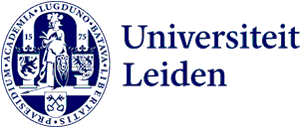Admission requirements
Knowledge of calculus and linear algebra at the bachelor level is required. In terms of the Leiden curriculum, the Astronomy bachelor's courses Quantum Mechanics 1 and Quantum Mechanics 2, Analyse 1 NA, Analyse 2 NA, Linear Algebra 1 NA or equivalent are a prerequisite for enrolling in the course and the bachelor's course Radiative processes is strongly recommended.
Description
Astronomical spectroscopy lies at the intersection of astronomy, quantum mechanics, and experimental spectroscopy. To fully interpret telescope data across the electromagnetic spectrum—and to maximize its scientific and societal impact—a solid understanding of the theoretical foundations and laboratory methods is essential.
In this course, you will explore the principles and applications of atomic and molecular spectroscopy in an astronomical context. Topics include the fundamentals of absorption spectroscopy, the historical development of astronomical spectroscopy, and the interpretation and simulation of spectra involving electronic, vibrational, and rotational transitions. A key focus is the interplay between observational data and laboratory measurements in advancing our understanding of the universe.
The course begins with core quantum mechanical concepts and builds toward the spectroscopy of atoms and molecules commonly found in the interstellar medium. You will learn to simulate molecular spectra using Pgopher software and compare these with real observational data. The course concludes with an introduction to laboratory spectroscopy techniques, showcasing how molecular spectra are measured under controlled experimental conditions.
Key topics include:
Foundations of spectroscopy: historical context and fundamental concepts from both microscopic and macroscopic perspectives.
Atomic spectroscopy: quantum theory and spectral signatures of hydrogen and other common astronomical elements.
Molecular spectroscopy: structure and transitions of molecules relevant to interstellar environments.
Laboratory techniques: how spectra are measured and characterized in controlled conditions.
Spectral simulation: applying theoretical knowledge to simulate spectra and compare them with laboratory and observational results.
Course objectives
Upon completion of this course, you will be able to:
1. Read spectroscopic notation, and interpret and simulate (interstellar) spectra
2. Explain the origin of atomic and molecular spectra
3. Reproduce and simulate the typical shape of molecular spectra
4. Calculate/explain physical parameters from spectra
5. Read and summarize the literature on spectroscopy with astronomical applications
6. Explain solid-state and gas-phase spectra obtained in the laboratory
Timetable
You will find the timetables for all courses and degree programmes of Leiden University in the tool MyTimetable (login). Any teaching activities that you have successfully registered for in MyStudyMap will automatically be displayed in MyTimeTable. Any timetables that you add manually, will be saved and automatically displayed the next time you sign in.
MyTimetable allows you to integrate your timetable with your calendar apps such as Outlook, Google Calendar, Apple Calendar and other calendar apps on your smartphone. Any timetable changes will be automatically synced with your calendar. If you wish, you can also receive an email notification of the change. You can turn notifications on in ‘Settings’ (after login).
For more information, watch the video or go to the 'help-page' in MyTimetable. Pleas note: Joint Degree students Leiden/Delft have to merge their two different timetables into one. This video explains how to do this.
Mode of instruction
The course consists of lectures covering theoretical topics, a demonstration session on laboratory spectroscopy, and a tutorial on spectral simulation using Pgopher. Exercises linked to the lecture topics are mandatory and form an integral part of the learning process.
Assessment method
Exercise assignments (40%)
A written report about simulations performed in the tutorial class compared with lab measurements and astronomical observations in literature (40%)
Oral presentation based on the written report, including observational literature and simulated spectrum compared with spectral databases (20%)
Reading list
Astronomical spectroscopy: An Introduction to the Atomic and Molecular Physics of Astronomical Spectra (J. Tennyson), ISBN 1860945139 (optional)
Modern Spectroscopy (J. Michael Hollas), ISBN 0470844159 (optional)
Registration
As a student, you are responsible for registering on time, i.e. 14 days before the start of the course. This can be done via Mystudymap. You do this twice a year: once for the courses you want to take in semester 1 and once for the courses you want to take in semester 2. Please note: late registration is not possible.
Registration for courses in the first semester is possible from July; registration for courses in the second semester is possible from December. First-year bachelor students are registered for semester 1 by the faculty student administration; they do not have to do this themselves. For more information, see this page.
In addition, it is mandatory for all students, including first-year bachelor students, to register for exams. This can be done up to and including 10 calendar days prior to the exam or up to five calendar days in case of a retake exam. You cannot participate in the exam or retake without a valid registration in My Studymap.
Extensive FAQ's on MyStudymap can be found here.
Contact
Lecturer: Dr. K. Chuang
Remarks
Soft skills
During this course you will be trained in:
Finding, reading and summarizing modern astronomical literature
Writing a structured report on simulated spectra
